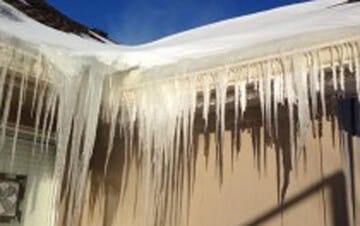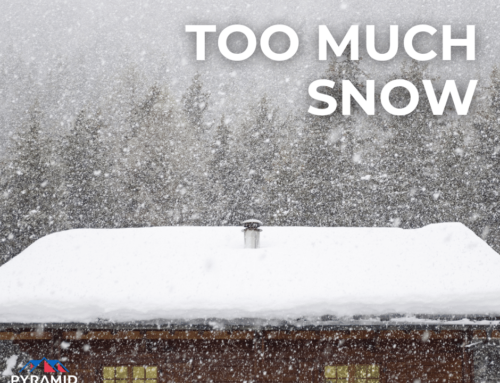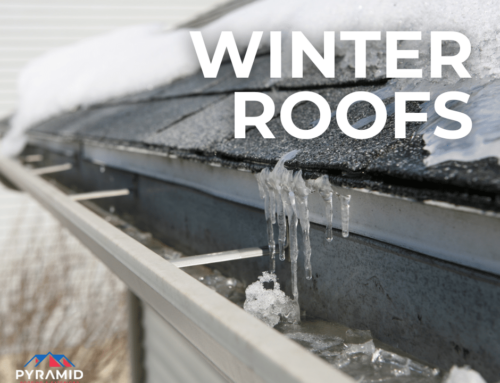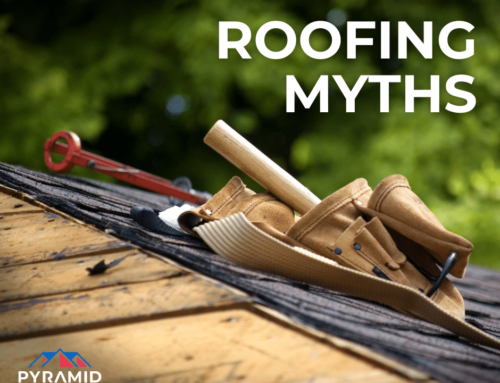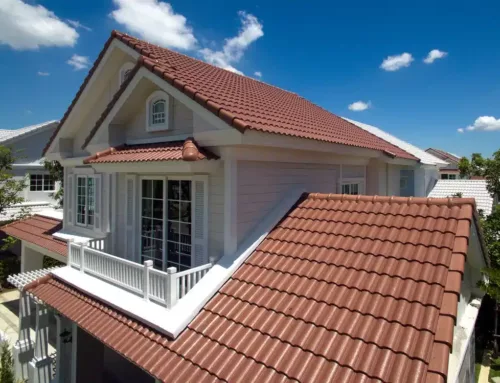So far Kansas City has seen minimal snow and ice this winter, but winter is far from over. The prime snow season in Kansas City is from December to February, but it can begin as early as October and extend all the way into April. While snow can be beautiful, it can also cause serious problems for your roof. One of the most common winter roofing issues that homeowners face is ice dams.
Ice dams form when there is a build-up of ice on the roof that prevents melting snow from running off the roof. This is usually caused by a combination of inadequate ceiling insulation, poor roof ventilation, and a freeze-thaw cycle. Inadequate insulation or poor ventilation allow heat to collect in the attic and warm the upper portions of the roof.
The eaves, however, remain cold. The warm portions of the roof allow the snow to melt, but when it reaches the eaves, it refreezes, causing an ice dam. Warm sunny days followed by frigid nights can also cause this freeze-thaw cycle. The snow that is melting higher on the roof backs up behind the ice dam and flows under the shingles, causing it to leak into the interior of the house.
On the interior, these leaks can lead to stained or sagging ceilings, warped floors, peeling paint, and soggy insulation. It can also allow the growth of mold or mildew. On the exterior, ice dams can tear off gutters and loosen shingles.
Some homeowners are tempted to try and remove ice dams themselves using a shovel or pick. We strongly advise against doing this as you can cause damage to your roof. Instead, call a professional roofing contractor, such as Pyramid Roofing, to come remove the ice dam and perform any necessary repairs to prevent ice dams for forming in the future. This may include increasing ventilation, adding insulation, and sealing off any air leaks.
There are a few steps you can take yourself to try and lessen the damage until you can get a permanent fix in place.
- Take a fan into your attic and aim it at the leaking area. The cold air will freeze the water and prevent further leaking.
- Use a snow rake to remove some of the snow on your roof, assuming your roof is relatively close the ground. Never attempt to get onto your roof yourself, especially when snow and ice are present. You can purchase a snow rake with a telescoping handle at a home improvement store. Be sure to look for a model with a built-in roller, which will protect the roof by keeping the blade safely above the shingles.
- Fill the leg of a pair of panty hose with a calcium chloride ice melter. Lay the filled hose onto the roof so that it crosses the ice dam and hangs over the gutter. You can use a long-handled garden rake to push it into the proper position. The calcium chloride will cause the ice to melt and create a pathway through the ice dam for water to flow down the roof, into the gutters, and off the roof.

